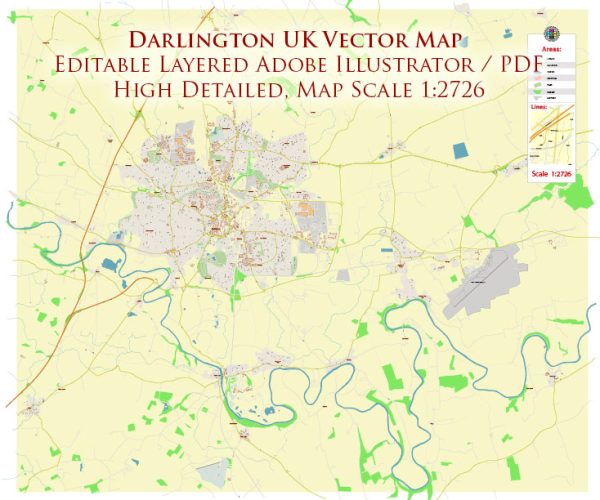Darlington is a market town located in County Durham, England, and it has both urban and rural areas. While I can provide a general ecological description, it’s important to note that the specific ecological characteristics of the town may vary depending on its location within the town and its surrounding areas. Here’s an overview:
- Landscape and Geography: Darlington is situated in the Northeast of England, and it is part of the Tees Valley region. The town is characterized by a mix of urban development, residential areas, and open green spaces. The town is situated on the River Skerne.
- Urban Environment: In the urban areas of Darlington, you will find typical urban ecosystems with roads, buildings, and infrastructure. These areas are home to various species of birds, insects, and small mammals that have adapted to urban life.
- Green Spaces: Darlington boasts several parks and green spaces, including South Park, North Lodge Park, and West Park. These areas provide important ecological pockets within the urban environment. They are home to a variety of trees, plants, and wildlife.
- River Skerne: The River Skerne, which runs through Darlington, contributes to the local ecology. It supports various aquatic species and provides a habitat for fish, insects, and waterfowl. However, the health of the river ecosystem may be influenced by factors such as water quality and human activities.
- Woodlands: There are woodlands and wooded areas in and around Darlington, including the Cockerton Woods and Mowden Hall Woods. These areas support a diverse range of plant and animal species, including various trees, wildflowers, and woodland birds.
- Farmland and Rural Areas: In the rural areas surrounding Darlington, you’ll find agricultural land, meadows, and hedgerows. These areas are important for agriculture and provide habitats for farmland birds and small mammals.
- Biodiversity: The ecological diversity of Darlington includes both native and non-native plant species, and the town is home to various bird species, insects, and small mammals. Conservation efforts are important to protect and enhance the local biodiversity.
- Conservation Efforts: There are local conservation groups and initiatives working to protect and enhance the ecological health of Darlington. These efforts may include habitat restoration, tree planting, and wildlife conservation projects.
- Challenges: Urbanization and human activities can pose challenges to the local ecology. Pollution, habitat fragmentation, and the impact of climate change are factors that need to be addressed to maintain a healthy and thriving environment.
It’s worth noting that specific ecological details may change over time due to various factors, so for the most up-to-date information, it’s a good idea to consult with local environmental organizations or government agencies responsible for environmental conservation in Darlington.


 Author: Kirill Shrayber, Ph.D.
Author: Kirill Shrayber, Ph.D.